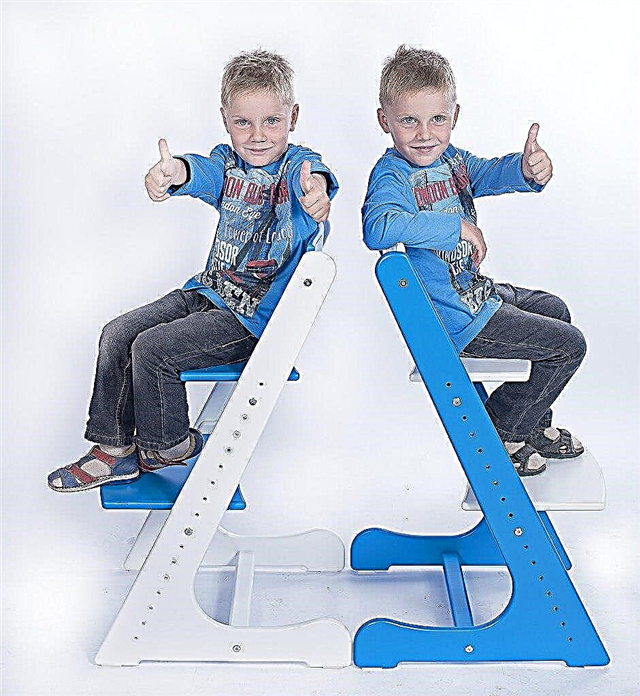
A nursery for a kid is his little world. In it, he is the main character of all fairy tales and cartoons. But in order for this atmosphere to completely reign, it is necessary to dilute it with bright colors. A lambrequin will help with this, which will easily merge into the children's atmosphere.
History of appearance
Initially, such an element of decor appeared in the Renaissance era. They used to decorate the sleeping bed, attaching it above the bed, like a canopy. Over time, this decoration was transferred to the windows. Then lambrequins were created from smooth fabrics, which were decorated with embroidery or fringe.


At present, it is customary to call a lambrequin a strip-decor, with the help of which arches or openings in rooms are decorated.
For window openings, such products are made either together with curtains or separately.
Features and types
Parents' desires for arranging a children's room do not always coincide with the opinion of children. However, the installation of such a detail as a lambrequin in a room is always accompanied by admiration - both by the child and the adult himself.
The advantages of using lambrequins in a children's room can be characterized by the following points:
- a large number of materials and manufacturing topics;
- different colors;
- visual expansion of space;
- the ability to hide any flaws (ceiling, windows);
- practicality;
- easy care.
From the negative points, it is worth highlighting the cost. High-quality natural fabrics are quite expensive.

Lambrequins are divided into four types:
- Hard lambrequin. The most popular type used for children's bedrooms. This is due to the fact that such a decorative element is quite durable and very practical.
- Openwork. The production of such products takes place in an industrial way, from two-layer fabrics.


- Soft.
- Combined. The last two types of lambrequins are quite similar to each other: they have many folds and additional decorative elements. However, their placement in a children's room is undesirable due to the constant formation of dust on the folds.


It is worth noting the most popular lambrequin design - "scarf". This structure is quite simple, it looks quite stylish and neat, and it will not go unnoticed in the children's room.

The design of the lambrequins themselves is a rather tricky business. Many different decorative elements are used here: bell, swag, chill mold, ruffles and other equally interesting options.
Folds
It is impossible not to highlight the feature of lambrequins - folds. They are of several types:
- Frill. On the one hand, they look like folds, and on the other, like falling waves. They are made in several varieties, differing in style. The following options are distinguished: multilayer, double, oblique.
- Swag. These are arched horizontal folds, often made with decorative elements.
- Crossover. It looks like a swag, but there is some space between the arcs.
- Bell (tie). Looks like a narrow striped fabric (with vertical folds).
- Coquille. Resembles a doubled frill with opposing folds.
How to place?
There are several rules for placing these elements in the bedroom:
- The lengths of the lambrequin and the cornice must match.
- The decor should go over the curtains.
- The height of the lambrequin should be a fifth or seventh of the length of the curtains.
- Color palettes of curtains and décor must match. You can decorate the lambrequin with all available methods - this will only make it more unique.
Material
Lambrequins in a children's room perform two main functions: decoration and practicality. Therefore, when choosing a material from which this element can be made, it is worth paying attention to its quality. Veil and tulle are the most relevant materials for a children's room.


A veil (which is silk, cotton and wool) is characterized by such qualities as:
- antistatic;
- no dust accumulation;
- excellent permeability for air and light.
Organza lambrequins are especially popular. Shiny or matte patterned fabric will look mesmerizing in any bedroom.


As for tulle, it also has a number of advantages:
- durability;
- has a dense structure;
- ease of use;
- do not accumulate dust;
- affordable price.
Color solutions
Lambrequins in a children's room are usually distinguished by the brightness of colors and a combination of various details. The theme can be chosen, focusing on the preferences of the child, as well as on the general design of the room. It can be a marine or automotive theme. An excellent option would be to decorate the decor in the style of landscapes or plant and animal fauna.


Boy's and girl's rooms are different by definition. Saturation of blue, blue, light green shades is more inherent in boys' room, while girls like pink, yellow or orange colors more.


In a room where children of different sexes live, you will definitely need to observe a neutral approach.
Talk to the guys about which design they like best. Perhaps it will be the heroes of your favorite fairy tales or cartoons, the starry sky with twinkling stars - the children will tell you. Complete the look with inserts of flowers, plush toys or cloud-shaped appliqués - kids will love it.
Tips for choosing
This issue should be treated with special attention, since the correct selection of lambrequins in the nursery guarantees a good mood and a positive attitude. The room will become saturated with bright colors, which will make it much more interesting.
Below are some tips for choosing lambrequins for a nursery:
- Lambrequins should please the owner of the room.
- Combinations of textures. Pay attention to how they fit into the big picture. The color palette of the walls, textiles should be combined with the texture of curtains, as well as lambrequins.

- The quality of the material. Evaluate how the quality of the material meets the necessary requirements, study the density of the fabric, the environmental friendliness of the material and its practicality.
- If the room is bright, with memorable colors, placing lambrequins in soothing colors in the children's bedroom - linen or chintz specimens, would be a good option.
- Safety. One of the most important selection criteria should be the safety of the material from which the lambrequin is made. It must comply with fire resistance standards, do not collect dust and be hypoallergenic.
- The height of the decorative element. Having chosen the required height of the lambrequin, you can not only regulate the supply of light in the room, but also provide the aesthetic appearance of the window itself.
For an overview of one of the options for a lambrequin for a nursery, see the following video.



